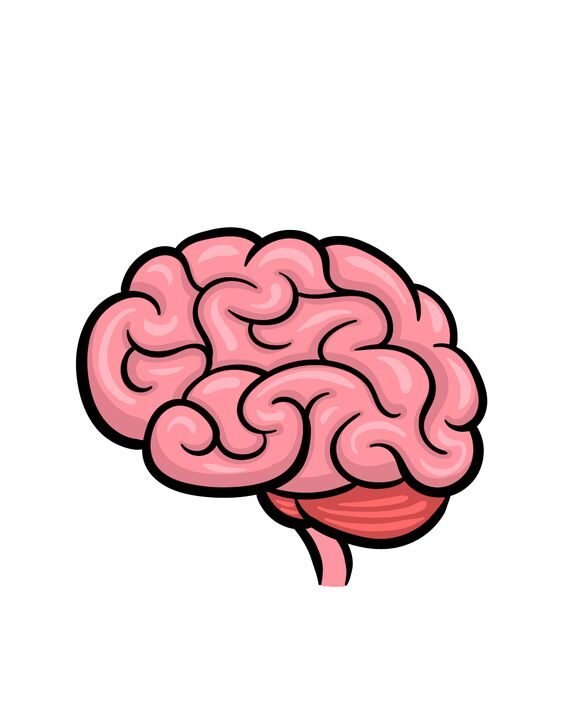The human brain is an extraordinary organ, acting as the control center for our entire body. Despite its relatively small size, the brain is incredibly complex, containing billions of neurons that work together to coordinate everything from our thoughts and emotions to our movements and sensory experiences. In this blog, we’ll explore the intricate anatomy of the brain and uncover some fascinating facts that highlight its remarkable capabilities.
The Anatomy of the Human Brain
The brain is divided into several distinct regions, each with specialized functions. Let’s take a closer look at its key components:
- Cerebrum:
- The cerebrum is the largest part of the brain, making up about 85% of its total weight. It is divided into two hemispheres, the left and the right, connected by a bundle of nerve fibers called the corpus callosum.
- Each hemisphere is further divided into four lobes:
- Frontal Lobe: Responsible for higher cognitive functions like decision-making, problem-solving, planning, and controlling behavior. It also houses the primary motor cortex, which controls voluntary movements.
- Parietal Lobe: Processes sensory information such as touch, temperature, and pain. It plays a crucial role in spatial orientation and body awareness.
- Temporal Lobe: Involved in processing auditory information and is essential for understanding language and forming memories.
- Occipital Lobe: The primary center for visual processing, allowing us to interpret and respond to visual stimuli.
- Cerebellum:
- Located beneath the cerebrum at the back of the brain, the cerebellum is responsible for coordinating voluntary movements, maintaining posture, and balancing. Despite its small size, it contains more than half of the brain’s neurons, making it a critical hub for motor control.
- Brainstem:
- The brainstem is the gateway between the brain and the spinal cord. It consists of three parts: the midbrain, pons, and medulla oblongata.
- The brainstem regulates essential functions such as breathing, heart rate, and blood pressure. It also controls reflexes like swallowing, coughing, and sneezing.
- Limbic System:
- The limbic system is a complex set of structures located deep within the brain. It includes the hippocampus, amygdala, and hypothalamus.
- The hippocampus is crucial for forming and retrieving memories. The amygdala processes emotions like fear and pleasure, while the hypothalamus regulates bodily functions such as hunger, thirst, and body temperature.
- Thalamus:
- Situated at the brain’s center, the thalamus acts as a relay station, transmitting sensory and motor signals to the appropriate parts of the brain. It plays a key role in consciousness, sleep, and alertness.
- Basal Ganglia:
- A group of nuclei located at the base of the brain, the basal ganglia are involved in regulating movement, habits, and reward processing.

Fascinating Facts About the Human Brain
- A Supercomputer of Neurons:
- The human brain contains approximately 86 billion neurons, each connected to thousands of other neurons through synapses. This vast network allows for an estimated 100 trillion neural connections, making the brain more powerful than any supercomputer.
- Energy Consumption:
- Despite accounting for only about 2% of our body weight, the brain consumes roughly 20% of the body’s total energy. This energy is used to maintain the brain’s functions, such as processing information, maintaining consciousness, and regulating bodily functions.
- The Brain’s Plasticity:
- The brain is incredibly adaptable, capable of reorganizing itself in response to new experiences, learning, or injury. This ability, known as neuroplasticity, allows us to acquire new skills, recover from brain damage, and even form new habits.
- Memory Capacity:
- The brain’s memory capacity is virtually limitless. Unlike a computer, which stores information in a fixed amount of space, the brain’s ability to store memories is flexible, allowing for continuous learning and memory formation throughout our lives.
- Dreams and Sleep:
- During sleep, the brain remains highly active, particularly during the REM (Rapid Eye Movement) stage. This is when most dreaming occurs, and it’s believed that dreams help with memory consolidation and emotional regulation.
- The Brain’s Speed:
- Information in the brain travels at speeds of up to 268 miles per hour (431 kilometers per hour). This rapid communication between neurons allows for quick reflexes and instantaneous decision-making.
- Symmetry and Lateralization:
- While the two hemispheres of the brain are symmetrical, they are specialized for different functions. The left hemisphere is typically associated with language, logic, and analytical thinking, while the right hemisphere is linked to creativity, intuition, and spatial awareness.
- The Brain and Emotions:
- The amygdala, a small almond-shaped structure in the limbic system, plays a central role in processing emotions, particularly fear and pleasure. It is closely connected to the hippocampus, which explains why emotionally charged experiences are often more memorable.
- Brain Development:
- The human brain continues to develop well into early adulthood. The prefrontal cortex, responsible for decision-making and impulse control, is one of the last areas to mature, typically around the age of 25.
- The Blood-Brain Barrier:
- The brain is protected by the blood-brain barrier, a selective membrane that prevents harmful substances from entering the brain while allowing essential nutrients to pass through. This barrier is crucial for maintaining the brain’s delicate chemical balance.

Conclusion
The human brain is a marvel of nature, a dynamic and complex organ that controls every aspect of our existence. From its intricate anatomy to its remarkable capabilities, the brain continues to captivate scientists and researchers, who strive to unravel its mysteries. As we continue to explore the brain’s depths, we gain a greater appreciation for the incredible power and potential that resides within each of us.

Leave a Reply